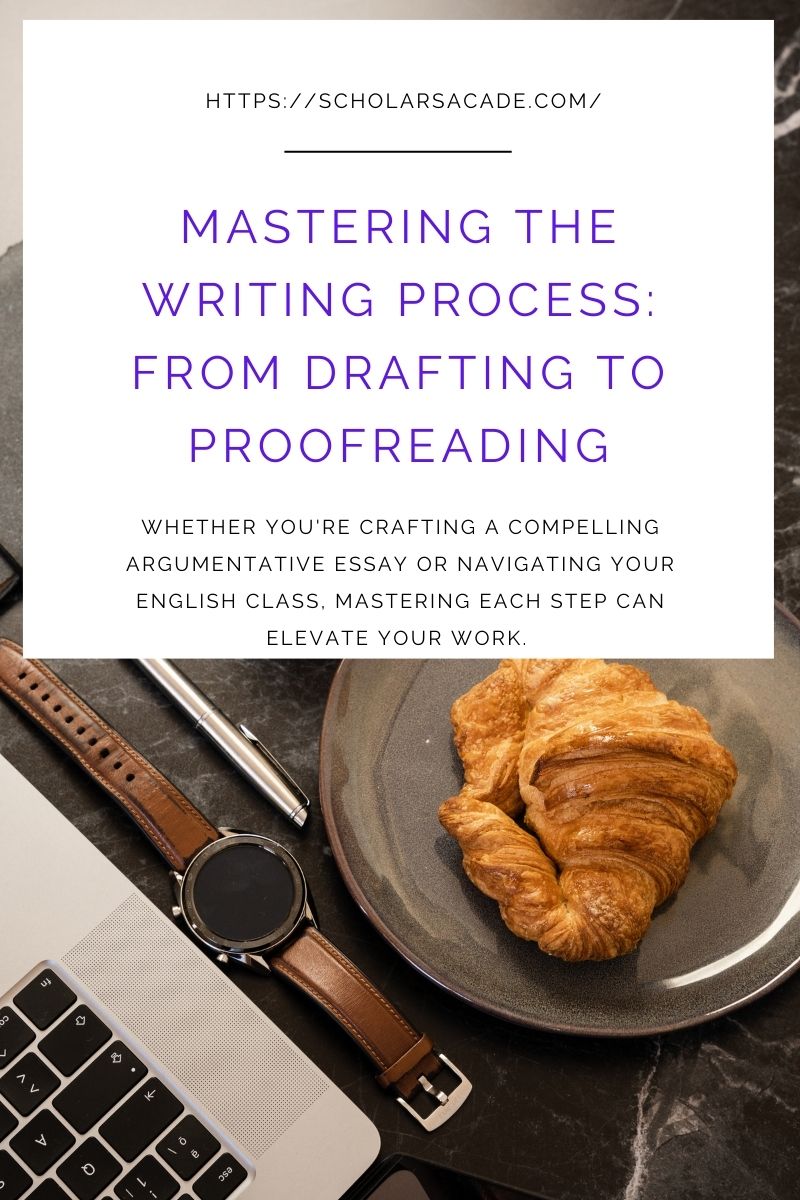
Mastering the Writing Process: From Drafting to Proofreading
Mastering the Writing Process: From Drafting to Proofreading
Posted: February 28th, 2025
would you like to master the art of drafting and proofreading a high scoring essay ? lets dive into the essentials of the writing process. Whether you’re crafting a compelling argumentative essay or navigating your English class, mastering each step can elevate your work. So, grab your favorite beverage, get comfy, and let’s get started!
Drafting the Essay
Tips for Writing the First Draft
Ah, the first draft. It’s like the first pancake—often messy, but essential. Here’s how to make it less daunting:
- Start with an Outline: Your outline is your roadmap. It keeps your thoughts organized and ensures you stay on topic.
- Write Freely: Don’t fret over grammar or spelling at this stage. Let your ideas flow; you can polish them later.
- Set a Timer: Write in short bursts, like 25 minutes, then take a break. This Pomodoro Technique keeps you focused and energized.
Common Pitfalls to Avoid when drafting and proofreading your essay
Even the best writers can fall into traps. Here’s what to watch out for:
- Overthinking: Don’t get stuck searching for the perfect word. Write it down and move on.
- Editing While Writing: Save edits for later. Focus on capturing your ideas first.
- Ignoring Structure: Stick to your outline to keep your essay coherent and logical.
Example: Outline to First Draft Progression
Let’s see this in action. Imagine you’re writing about the benefits of renewable energy. Your outline might look like this:
- Introduction: Hook, background, thesis
- Body Paragraph 1: Environmental benefits
- Body Paragraph 2: Economic advantages
- Body Paragraph 3: Social impacts
- Conclusion: Recap, call to action
From here, your first draft will flesh out these points. Remember, it doesn’t have to be perfect—just get your ideas down.
Revising and Editing
Importance of Revision for Clarity and Coherence
Revising is where your writing truly shines. It’s your opportunity to sharpen your argument and enhance clarity, much like carving a masterpiece from a block of marble.
- Read Aloud: Listening to your words can reveal awkward phrasing or unclear points.
- Seek Feedback: Fresh eyes can provide valuable insights. Don’t hesitate—ask a friend or use campus resources.
Techniques for Effective Editing
Editing goes beyond correcting typos; it’s about refining your prose.
- Focus on Structure: Ensure each paragraph transitions smoothly to the next.
- Vary Sentence Length: Combine short and long sentences to maintain reader interest.
- Cut the Fluff: Be concise. Every word should have a purpose.
Case Study: Revising an Argumentative Essay
Imagine you’ve written an essay advocating for longer library hours. Your first draft might lack robust evidence. During revision, you can incorporate statistics, such as “A survey from the University of Michigan found that 60% of students would benefit from extended library hours” (University of Michigan, 2022). This data bolsters your argument and enhances its persuasiveness.
Proofreading: Mastering the Final Touch
Checking for Grammar and Punctuation Errors
Proofreading is the final polish of your writing. Think of it as checking your reflection before you head out the door. Here’s how to ensure your work shines:
- Use Checklists: Create a list of common errors to watch for, such as subject-verb agreement, comma splices, and sentence fragments.
- Take Your Time: Avoid rushing through this step. Take a break between writing and proofreading to return with fresh eyes and a clear mind.
Tools and Resources for Proofreading
In today’s digital age, you have plenty of tools at your disposal to assist you:
- Grammarly: A reliable tool for catching grammar mistakes and offering suggestions for improvement.
- Hemingway App: Excellent for identifying complex sentences and passive voice, helping you simplify your writing.
- Microsoft Word’s Spell Check: While not perfect, it does catch many basic errors and can serve as a helpful starting point.
Example: Proofreading Checklist
Here’s a simple checklist to guide your proofreading process:
- Are there any spelling errors?
- Is the punctuation correct?
- Do all sentences make sense and flow well?
- Are there any awkward or unclear phrases?
- Is the essay formatted correctly and consistently?
By drafting, revising, and proofreading carefully, you can transform your writing from a rough draft into a polished masterpiece. Remember, writing is a skill that improves with practice. Keep honing your craft, and soon you’ll be writing essays that not only meet but exceed expectations. Happy writing!
Expert paper writers are just a few clicks away
Place an order in 3 easy steps. Takes less than 5 mins.